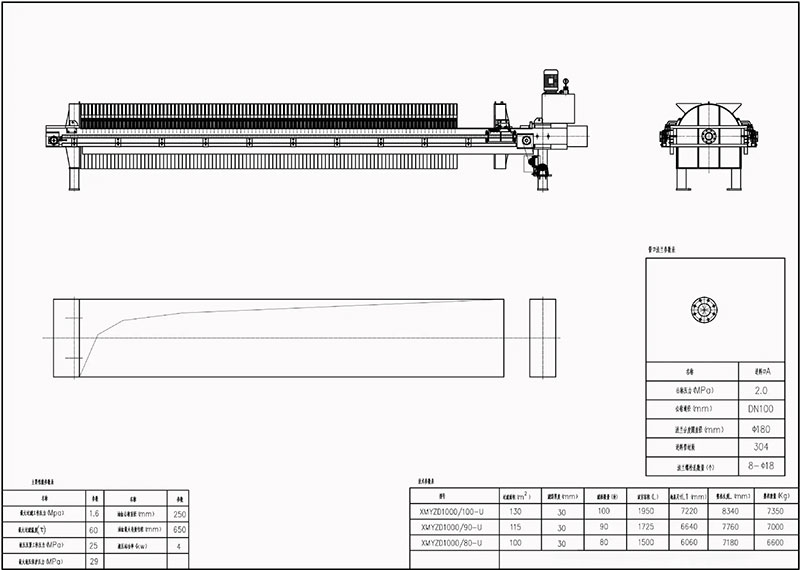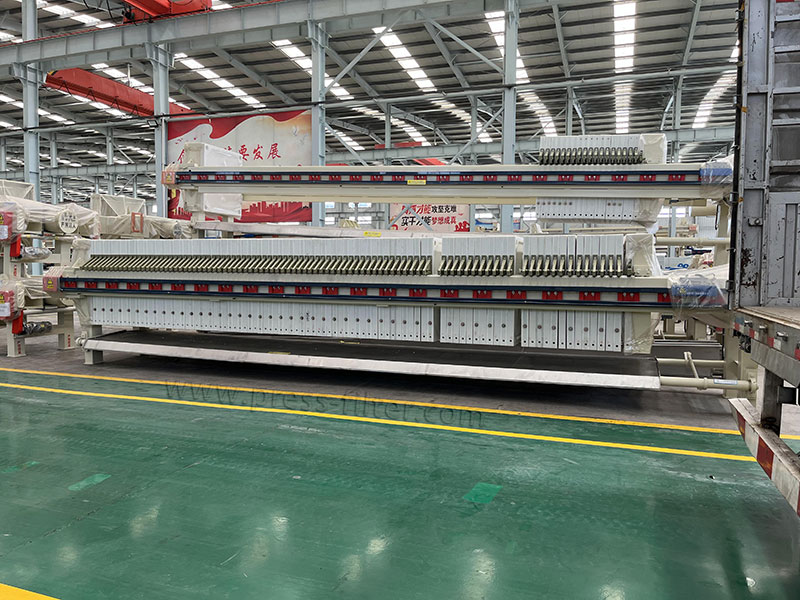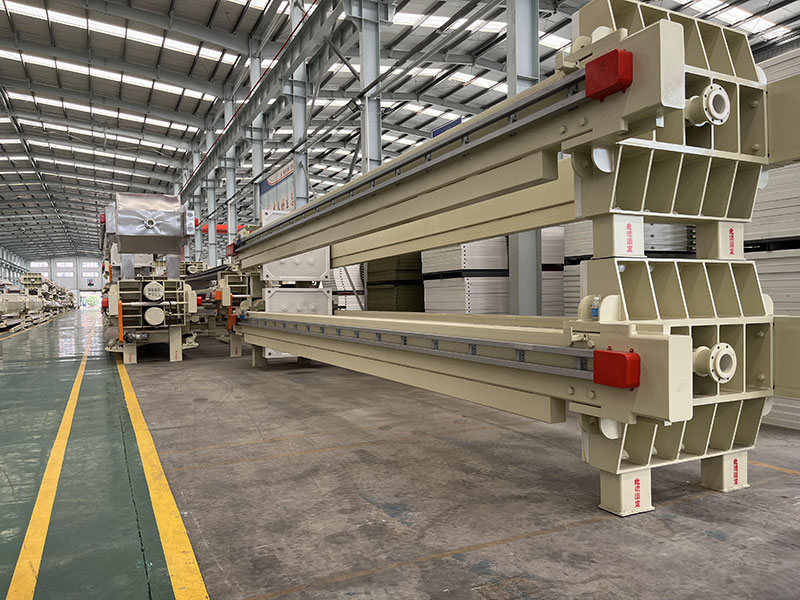Installation and Debugging of Filter Press
Filter press, widely used for solid-liquid separation, can experience certain issues during its installation and debugging phases. These processes can differ based on the particular model of the filter press and the specific challenges encountered. The following is the detailed instruction and operation manual for filter press installation and commission based on Uniwin’s extensive knowledge and experience.

How to install the filter press?
1. Whole machine installation
(1) When hoisting the complete machine, a crane should be selected according to the complete machine’s quality indicated on the filter press’s nameplate. According to the special lifting construction plan formulated, the lifting points are the lifting rings located at the end of the main beam of the filter presses and the lifting rings on the thrust plate.
(2) When the filter press is installed, its concrete foundation structure must be flat and solid; a channel about 1 meter wide must be left around the filter press to facilitate subsequent operation and maintenance; the frame should be calibrated horizontally and diagonally, and the thrust plate The legs are fixed with anchor bolts, and the cylinder legs are strictly prohibited to be fixed to ensure that they maintain a certain degree of free displacement under stress.
(3) Check whether the bolts of the filter press frame are tightly connected.
(4) When lifting the filter plate, check its integrity; there should be no scratches or bruises. Lift the tail plate to connect the tail plate and the main beam. Hang the head plate on the two main beam rails, check the coaxiality of the spherical end cover and the piston rod, and install the pressure plate to connect the head plate and the piston rod. The filter plates must be arranged neatly on the frame in order, and each filter plate’s inflatable holes and feed and underflow holes must be aligned; the filter cloth must be kept flat and cannot be folded.
(5) Check whether the oil pipe connections of the hydraulic pump station are loose and whether the oil tank is clean.

2. Installation of electrical control parts
(1) Professional electricians must complete electrical installation work. When all circuit breakers in the electrical control cabinet are open, check whether the connection of each cable and terminal is secure and fastened and whether the opening and closing of relays, contactors, etc., are sensitive and smooth.
(2) Install the electrical control cabinet in the designated area and then lay the cables from the junction box to the terminals in the cabinet.
(3) Check whether the motor is running normally. The running direction must be consistent with the arrow direction marked on the outside.
3. Pipe installation
The pipeline installation of the filter press must be constructed according to the drawings, and wrong connections are strictly prohibited. The installation must be based on the pipeline’s diameter and the construction site’s conditions. Under this premise, efforts are made to reduce pipeline length and control costs.
How to debug the filter press?
1. Check the whole machine
(1) Check whether the power supply, compression, and return oil pipes are installed correctly, whether the upper and lower limit pressure settings of the electric contact pressure gauge are appropriate, and whether the power supply wiring is safe and reasonable.
(2) Check whether the filter plates are arranged neatly and correctly; check whether the filter cloth is folded during installation.
(3) Check whether the configuration of pipelines and valves, such as feeding, washing, blowing, liquid discharging, and pressing, is correct and reasonable.

2. Hydraulic device commission
(1) When the power is activated for the hydraulic pressing device, the starter motor is expected to function properly. Upon applying hydraulic pressure, the pressure gauge should increment consistently, and the hydraulic system should be free from leaks. It’s important to adjust the working pressure of the hydraulic station accurately based on the machine’s dimensions. Additionally, if a deficiency in the oil tank is detected following the test run, it must be replenished.
(2) When tightening for the first time, observe whether the joints of the frame are normal and whether the main beam is deformed. If everything is normal, increase the pressure gradually and observe each time it is increased. In the event of any irregularities, immediately hit the emergency stop button and initiate the pressure relief process. Once the cause has been pinpointed, proceed with recommissioning.
(3) Let the piston rod drive the compression plate back and forth three times again to check whether the machine will automatically stop when the oil pressure rises to the upper limit of the electric contact pressure gauge. When maintaining pressure, observe whether the drop in oil pressure is normal.
3. Filter part debugging
(1) Press the filter plate tightly and maintain pressure.
(2) Begin by opening all valves for liquid discharge, then open the feed pump gate about a quarter, start operating the feed pump, and monitor any alterations in both the filtrate and the feed pressure. If the pressure is too high, open the valve on the return line to adjust.
Conclusion
The above is about preparing the startup and operation of the filter press. These are the experiences Uniwin has accumulated over more than 20 years. If you have any questions, please consult us.

